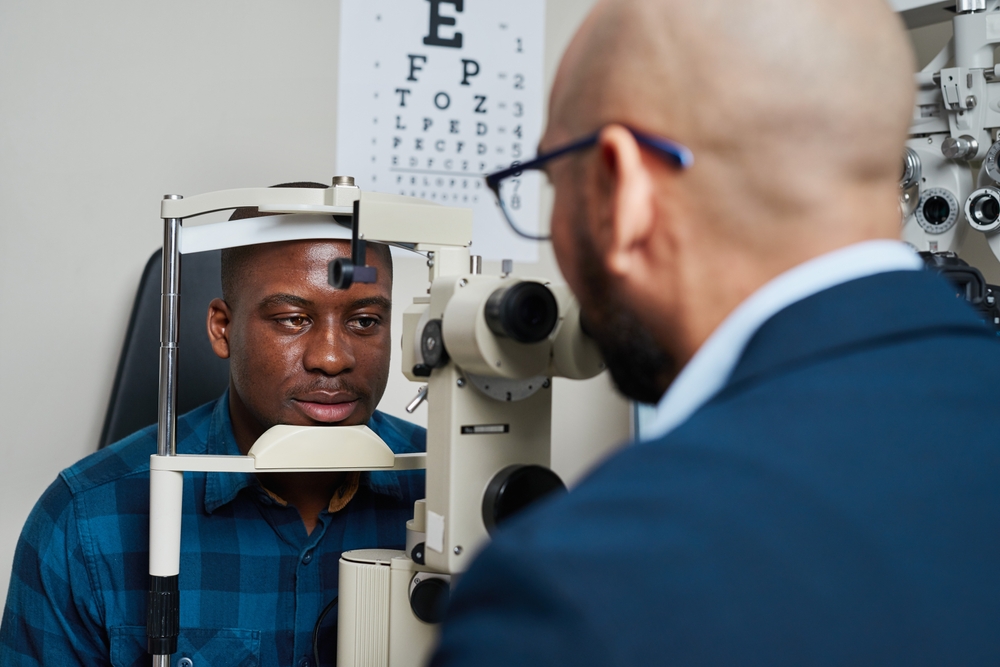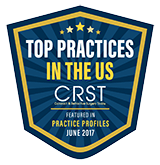Do your eyes often feel dry, gritty, tired, or irritated? You may be experiencing dry eye syndrome, a common condition that can significantly affect your daily comfort and overall quality of life.
Because dry eye can be caused by multiple factors, getting the right diagnosis is key. Optometrists use specialized tests to identify the underlying cause of your symptoms, allowing for more targeted and lasting relief. Here’s what you need to know about how dry eyes are diagnosed and treated.
What Is Dry Eye Syndrome?

Dry eye occurs when your eyes either don’t produce enough tears or the tears they do produce are of poor quality and evaporate too quickly. This leads to an unstable tear film and discomfort.
The tear film has three layers:
- Oily layer (prevents evaporation)
- Watery layer (provides hydration)
- Mucus layer (helps spread the tears evenly)
One of the most common causes of dry eye is Meibomian Gland Dysfunction or MGD. The Meibomian glands, located along the eyelid margins, produce the oily layer of the tear film. When these glands are blocked or not functioning properly—often due to hardened oils, abnormal blood vessels, or bacteria and/or Demodex mites—it disrupts the tear film and leads to dry eye symptoms.
Common Symptoms of Dry Eye
Dry eye typically affects both eyes, and symptoms may include:
- Blurred or double vision
- A gritty or scratchy sensation
- Sensitivity to light
- Redness
- Burning or stinging
- Mucus discharge or strings around the eyes
- Trouble wearing contact lenses
- Eye fatigue
- Excessive watering or tearing (a reflex response to dryness)
Can Dry Eye Be Treated at Home?
At-home remedies like warm compresses, over-the-counter preservative-free lubricating drops, running humidifiers, and gentle eyelid scrubs may offer temporary relief. However, they often don’t address the underlying cause, and symptoms can persist. It’s important to see an optometrist for a proper diagnosis and comprehensive treatment plan for recurring symptoms.
How Do Optometrists Diagnose Dry Eye?
Optometrists use several tools and tests and diagnose the cause and severity of dry eye, including:
1. Comprehensive Ocular History

Your doctor will begin with a detailed history, asking about symptoms, medical conditions, medications, contact lens use, prior eye surgeries, and environmental or lifestyle factors such as screen time or exposure to wind or dry air.
2. SPEED Questionnaire
The Standard Patient Evaluation of Eye Dryness (SPEED) is a short survey where you rate the frequency and severity of symptoms. This helps your doctor track symptom progression and decide if further testing is needed.
3. Keratograph Testing
This non-invasive, high-tech imaging tool evaluates:
- Tear film stability and quality
- Tear evaporation rate
- Surface inflammation
- Meibomian gland health
- Corneal surface irregularities
You simply look at a target while the device captures detailed images in just a few minutes. It’s an effective way to diagnose dry eye and monitor treatment success.
4. TearLab Osmolarity Test
This test measures the salt concentration (osmolarity) in your tears. Elevated osmolarity or significant differences between eyes are indicators of dry eye.
5. InflammaDry
InflammaDry detects MMP-9, a protein associated with inflammation in dry eye. A small tear sample is collected, and results are available within 10 minutes. This test helps identify whether inflammation is contributing to your symptoms.
How Is Dry Eye Treated?
At Williamson Eye Center, we offer OptiLight IPL, an advanced, FDA-approved treatment for dry eye caused by Meibomian Gland Dysfunction.
What Is OptiLight IPL?
Intense Pulsed Light (IPL) therapy targets inflammation and clogged oil glands, improving tear quality and reducing dry eye symptoms. Benefits include:
- Reduced inflammation and blood vessel growth
- Improved Meibomian gland function and oil production
- Fewer bacteria and Demodex mites around the eyes
What to Expect During Treatment
- Protective eye shields are placed over your eyes
- A coupling gel is applied to the treatment area
- Light pulses are delivered to the skin below your eyes
- Oil may be gently expressed from your Meibomian glands
Each session lasts about 10–15 minutes, with no downtime. Most patients see results after 2–3 sessions. A full course usually includes up to 4 sessions, spaced 2–4 weeks apart. Maintenance treatments are recommended every 6–12 months.
Find Long-Term Dry Eye Relief in Baton Rouge

At Williamson Eye Center, we use advanced diagnostic tools—including Keratograph testing, TearLab, and InflammaDry—to get to the root cause of your dry eye. With this precise information, we create personalized treatment plans that bring real, lasting relief.
Tired of struggling with dry, irritated eyes? Schedule your dry eye evaluation at Williamson Eye Center in Baton Rouge today and take the first step toward clear, comfortable vision.



